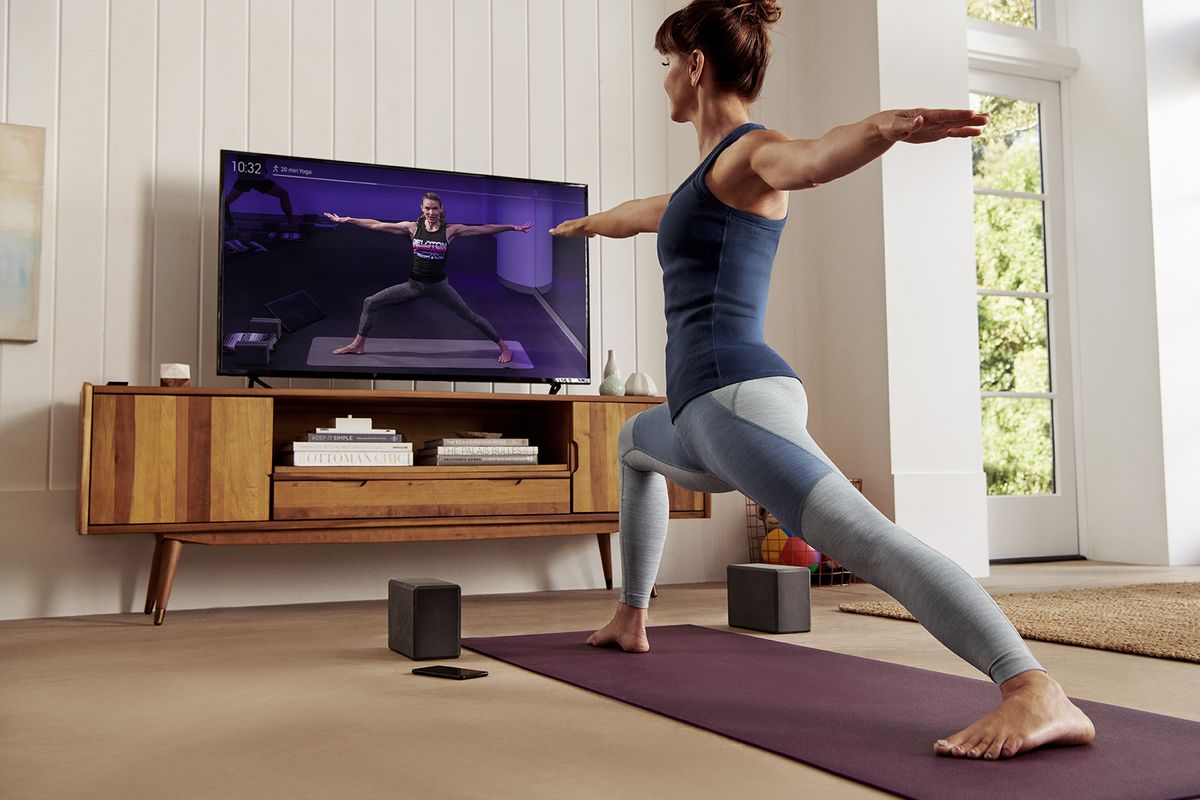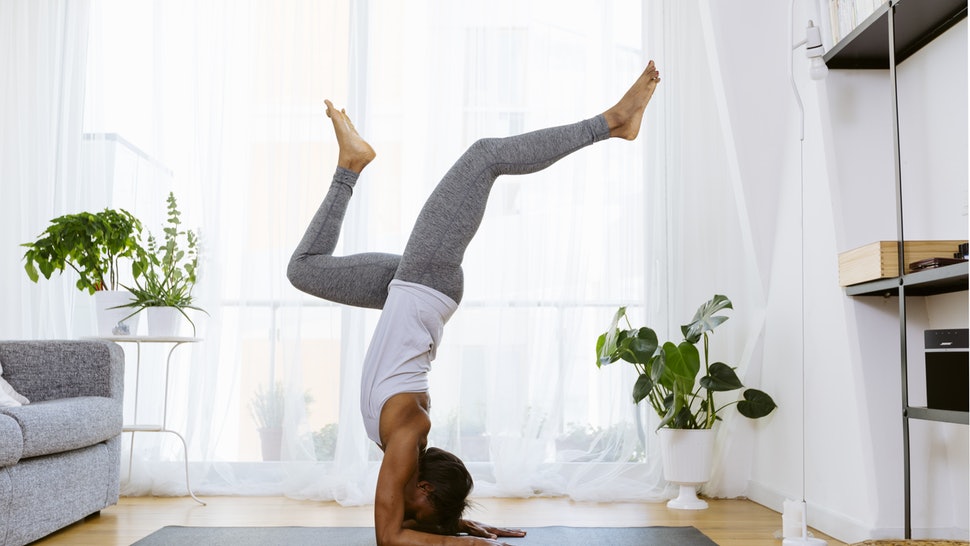
Gyms and workout studios are closing across the nation, and people are being asked to stay at home in order to slow the further spread of the highly infectious COVID-19 (coronavirus). Regular exercise is important to stay healthy and has been linked to improved heart health, improved bone density, improved joint mobility, improved cognition, improved mood, enhanced metabolic function, an increase in muscular mass, tone, and strength.
For good reason– the gym is a well-known and populated place where germs can be easily spread. A new study has shown that the coronavirus can live on surfaces—those popular free weights, cable machines, treadmills and floor mats– for up to three days, so your sweat towel is not going to do the job.
And between all of the excessive hand sanitizer and anti-bacterial purchasing, fears of contracting the virus have many people on edge– the combination of breaking news and misinformation on social media is enough to put anyone in a state of panic, stress and or depression.
Thankfully, many are taking the government’s requests to practice social distancing very seriously, and while the unknown and a drastic change in lifestyle can be quite stressful, I propose this: while we continue to be vigilant to not spread this disease further, use this time at home for more self-care and focus on (or adopt) a fitness routine.
Benefits of Exercise
The body’s natural release of endorphins is enhanced during bouts of physical activity, and this surge in happy hormones can boost your mood, your confidence and help reduce your levels of stress and anxiety.
Along with what we eat, where we live, how much we sleep, and even who we live with—exercise causes chemical reactions that can alter our health status. During stressful times, one of the greatest benefits of performing regular exercise is its ability to make the activities of everyday life feel easier.

It’s About Balance
“Exercise stress”, when managed well, is a healthy stress that over time pushes your body to adapt and become stronger and more efficient. Some studies suggest exercising on a regular basis is beneficial for immunological health, as it can have a positive effect on your body’s ability to remain well and fight off common illness. Other studies have found that during flu season, the temporary rise in body temperature can discourage certain bacterial growth and the stress relief benefits of exercise helps to keep you feeling at your best.
If you do choose to work out when you’re sick, you need your immune system to be firing on all cylinders, so you must carefully manage the duration, intensity level and overall volume of your exercise routines. Managing your exercise routine, consuming a healthy diet and getting enough rest are just a few great ways you can strive toward getting the best physical and emotional results, and avoid overexertion while sick.
Working out at Home
The good news– being stuck at home doesn’t mean you should stop working out—in fact, working out will likely help you keep a feeling of normalcy and protect your psyche while you’re , working out at home will likely help you keep a centered and more rational mindset. You can work out anywhere no matter how much space you have. All you need is your own body-weight and exercises where minimal equipment is required.
You can do a quick full body exercise routine at any time to stretch and strengthen your body.
Five At-Home Exercises to Keep You Healthy
If you’re interested in finding some more routines to do in the comfort of your home, you can access a free fitness portal at https://herbalifenutritionfitness.com
Reps: Perform 10-12 of each exercise. Repeat the exercises 4 times for a complete routine.
Time to Complete: About 20 minutes.
1. Triceps Dip with Reach
This exercise targets the backs of the arms and shoulders.
- Sit on the floor with your knees slightly bent.
- Place your hands behind you with your fingers facing your body.
- Lift your butt up off the floor so that you are supported by your arms and feet.
- Bend your arms at the elbow until your butt touches the floor then push back up to the starting position.
- If you want an extra challenge as you push up lift your left leg and reach forward with your right arm.
2. Push Ups
This is a total-body exercise as it requires the use of lots of muscle groups.
- Lay face down on the floor and Position your hands palms-down on the floor, approximately shoulder width apart and near your shoulders.
- The balls of your feet should touch the ground and feet just slightly apart.
- Raise yourself using your arms.
- Make a straight line from your head to your heels and contract your abdominals to keep your hips from sagging. This position is the beginning and the end position of a single push-up. Lower your chest toward the floor by bending your elbows hold for a second then return to the start.
3. Hands and knees Balance with Crunch

This exercise challenges your balance and works your abdominal muscles.
- Get onto the floor on all fours. Hands directly under the shoulders, knees under your hips. Keep your back flat. Raise your right arm forward and your left leg back behind you. Bring your knee toward your chest at the same time as brining your elbow to meet your knee.
- Do these 10 times then switch legs.
4. Squat
This is a functional exercise that works the largest muscle group in the body– your butt and legs.
- Stand with feet a little wider than shoulder-width apart, hips stacked over knees, and knees over ankles. Extend arms out straight so they are parallel with the ground, palms facing down. Start by getting into a position as If you are going to sit in a chair. While the butt starts to stick out, make sure the chest and shoulders stay upright, and the back stays straight. Keep the head facing forward with eyes straight ahead for a neutral spine.
- The best squats are the deepest ones your mobility allows. Optimal squat depth would be your hips sinking below the knees.
- Engage core and, with body weight in the heels, push back up to standing, driving through heels.
5. Reverse Lunge with Knee Lift.
This exercise targets the front and back of your legs.
- With your chest lifted, chin up and abs contracted, take a big step backward with your left foot. Sink straight down so that your back knee points down toward the floor. You are on your back, left toe. Your front foot is firm on the floor, as you push back to the starting position lift your knee up in front of you hold for a second then repeat and switch legs.
In short, use this downtime to practice self-care, and to make time to take care of your body. Don’t let yourself miss out on all of the wonderful health benefits associated with exercise. But remember, if you are sick and choose to work out, listen to your body and don’t push yourself too hard with your exercise routine to stay healthy, or you can risk a temporary decline in immunological function.
Stay Safe & Healthy.
Disclaimer
The Content is not intended to be a substitute for professional medical advice, diagnosis, or treatment. Always seek the advice of your physician or other qualified health provider with any questions you may have regarding a medical condition.